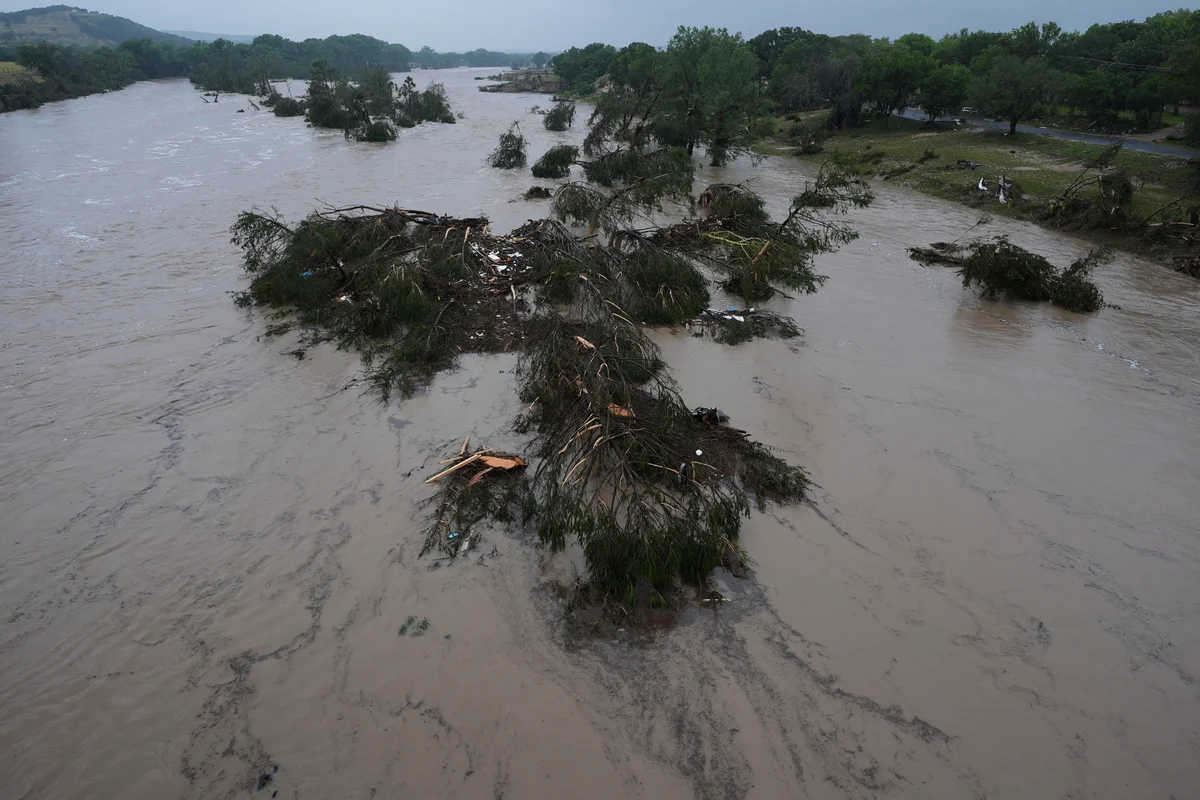By Stuti Mishra
Copyright independent

The world’s rivers are swinging more wildly between drought and flood, with six years in a row now showing an increasingly erratic water cycle, a UN report says.
The State of Global Water Resources 2024 report, published by the World Meteorological Organisation, says only about a third of major river basins last year had flows within the normal range. The rest were either dangerously low or unusually high, a clear sign of disruption to the water cycle that sustains communities, ecosystems and economies.
“Water sustains our societies, powers our economies and anchors our ecosystems. And yet the world’s water resources are under growing pressure,” WMO secretary general Celeste Saulo said.
“Reliable, science-based information is more important than ever before because we cannot manage what we do not measure.”
The findings come after 2024, the hottest year on record, which brought both severe droughts and catastrophic floods.
The report warns that such extremes are becoming the norm as rising greenhouse gas emissions drive global heating.
In South America, rivers including the Amazon and the Paraná ran far below normal levels, deepening the long-running drought in the Amazon Basin that has already left wildlife and communities struggling. Southern Africa also faced widespread drought, with deficits in the Zambezi and Limpopo basins.
By contrast, central and western Africa experienced devastating floods, with West African basins such as the Niger and the Volta inundated.
The region reported more than 2,500 deaths and 4 million people displaced during unusually heavy rainfall.
Europe saw its worst flooding in more than a decade while Asia and the Pacific were hit by record-breaking rainfall and tropical cyclones that killed over 1,000 people.
Brazil faced both extremes simultaneously: catastrophic flooding in the south killed 183 people even as drought continued to parch the Amazon.
The report also highlights a series of high-impact disasters across Asia. Dubai saw its heaviest rainfall in 75 years last April, with more than a year’s worth of rain falling in just 24 hours.
In southern India’s Kerala state, extreme downpours triggered landslides that killed 385 people in July.
The Himalayan nation of Nepal was struck by dramatic flooding and landslides after record-breaking rainfall in late September, while Typhoon Yagi became one of the deadliest events in Southeast Asia in 2024.
Rivers such as the Ganges, Godavari and Indus all ran above normal discharge, while parts of the Middle East and Central Asia saw lake levels fall well below average.
For the third year in a row, glaciers worldwide lost ice, shedding an estimated 450 gigatonnes in 2024 – enough water to fill 180 million Olympic swimming pools.
The melt contributed about 1.2 millimetres to global sea level rise in a single year. Colombian glaciers lost 5 per cent of their volume while record ice loss was recorded in Scandinavia and parts of Asia.
Nearly all of the world’s 75 largest lakes also experienced above-normal surface temperatures in July, with consequences for ecosystems, water quality and food chains.
Groundwater reserves are under pressure too: data from nearly 40,000 wells across 47 countries found that fewer than four in 10 had normal levels, with the rest showing shortages or surpluses. Over-extraction in countries including Australia, the US and across Africa threatens future supplies for both people and agriculture.
According to UN Water, 3.6 billion people already face inadequate access to water for at least one month a year – a figure projected to rise above 5 billion by 2050.
The report warns that the failure to meet Sustainable Development Goal 6, which commits governments to universal access to clean water and sanitation, is leaving billions exposed.
The WMO says countries need to vastly improve water monitoring and data sharing to respond effectively to the crisis.
“Continued investment and enhanced collaboration in data sharing are vital to close monitoring gaps,” Ms Saulo said. “Without data, we risk flying blind.”
Scientists have been sounding the alarm for years now. “Water is one of the first frontlines where the climate crisis becomes visible – whether through devastating floods or persistent droughts,” Dr Davide Faranda of France’s Institut Pierre-Simon Laplace, who was not associated with the study, said.
“Unless we rapidly cut fossil fuel emissions, these extremes will intensify, threatening ecosystems, agriculture and human health.”
The WMO says the past six years show a clear trend of imbalance. With more regions facing either too much or too little water, the planet’s water systems are straining under the combined pressures of climate change, population growth and overuse.
Glaciers and rivers, it notes, are sounding a clear warning. Once peak melt is passed, flows that billions rely on will diminish.
Without urgent action to reduce emissions and manage water more sustainably, the world will lurch from drought to deluge with ever greater human and economic costs.



